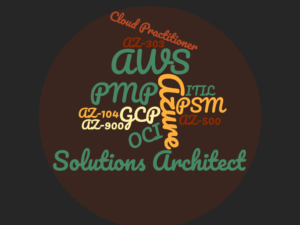Ever worked a job where you hit every goal but had no clue why it mattered? You meet deadlines, file reports, then learn the project was canceled or the budget never approved. It’s common—and it’s a problem. Today’s strongest professionals don’t just follow orders. They connect their work to larger goals. Companies now need people who see beyond their role and understand how everything fits together.
In this blog, we will share how developing a full view of business operations—from back office basics to big-picture strategy—can shape your career and help companies thrive.
Why Understanding the Whole Business Matters Now
Departments can’t afford to work in isolation anymore. When teams don’t communicate, mistakes happen. Work gets repeated, schedules slip, and customer confidence fades.
Today, one decision in marketing or operations can ripple everywhere. A small budget hiccup can freeze hiring. A missed shipment might derail a big campaign. Every piece of the business affects the rest.
That’s why companies want employees who connect the dots. People who grasp how finance supports marketing, or how customer service informs product updates. Big-picture thinking is no longer a bonus—it’s expected.
That’s where a BSBA degree online comes in. At Northwest Missouri State University, the B.S. in Business Administration program goes beyond silos. Students explore how finance, leadership, marketing, and logistics work in sync. The online format makes it practical to study while working, and the curriculum shows how real business decisions impact everything else.
No matter your career level, seeing how your work fits into the bigger structure makes you more valuable. It transforms you from someone who just completes tasks to someone who drives smarter strategies.
The View From the Back Office
The back office keeps everything running—payroll, procurement, IT, admin. These teams handle the systems that support everyone else.
But they’re often treated as background players, not strategic thinkers. That mindset holds people back from real growth and visibility.
Now picture a payroll manager who sees rising overtime. Instead of just flagging the expense, they trace it to scheduling issues and outdated policies—then help fix the root cause. Or an IT analyst who notices support teams struggling, then proactively suggests better tools and training. That’s more than support—it’s leadership.
The difference comes from seeing how daily tasks connect to the bigger business picture. Back office teams can drive real change—when they think beyond the checklist.
How the Boardroom Actually Works
Now let’s flip the view. The boardroom is where the big goals are set. Growth targets. New markets. Budget planning. But what’s often missed is that those big goals depend on small details.
A board might vote to expand into a new region. Sounds exciting. But success depends on operations knowing how to handle logistics. On HR knowing how to staff. On marketing knowing the new audience. If any part lags, the plan fails.
Boardrooms don’t need people who just agree. They need people who understand. They want to hear from voices across the business. But too often, only a few people at the table can speak for the whole picture.
That’s changing. Companies are trying to bring in new kinds of leaders. Leaders who have sat in the back office, managed operations, worked with customers, and understand the risks on the ground. These are the people who don’t just pitch ideas. They ask smart questions. And they see problems before they get expensive.
From Specialist to Strategist
You don’t have to be a CEO to think like one. But you do have to stop thinking only about your role. Start asking: How does this decision affect other teams? What does it mean for the customer? What’s the long-term impact?
That mindset shift is what moves people from specialists to strategists. It’s how a marketing coordinator becomes a brand director. Or how a floor supervisor becomes an operations lead.
The process isn’t instant. It takes learning, curiosity, and experience. You need to talk to people outside your team. Sit in on cross-functional meetings. Read reports you’re not “required” to read. Ask more questions.
And if you want to build that thinking into your day-to-day work, look for structured ways to learn. A solid business education isn’t just about tests. It’s about learning how money moves, how decisions are made, and how to translate one department’s needs into another’s language.
Where the Real Value Lies
The people who rise are the ones who connect the dots. They see the flow of the business. They notice what’s missing. And they help others do their best work.
In today’s workplace, titles matter less than insight. Teams want people who can see what’s coming. Leaders want people who bring more to the table than just output. And the smartest professionals are the ones who know how to step back and see the full map.
Whether you work behind the scenes or out front, learning to think big makes your work stronger. Because when you understand how the pieces fit together, you’re no longer reacting. You’re leading.
And that shift—from task-focused to strategy-driven—is the real move from the back office to the boardroom.
Further Reading:
How to Start a Career as a Data Analyst: Your Path to Success
Maximizing Team Potential: The Power of Technical Certifications

